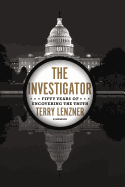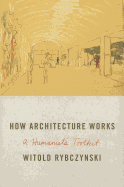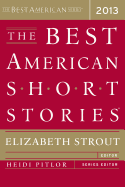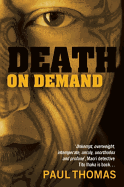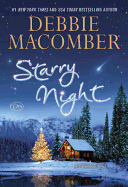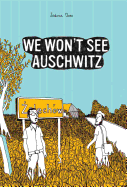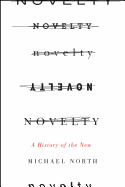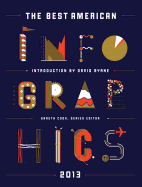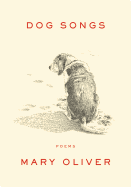Tuesday, October 22, 2013
With Halloween right around the corner, here are some goosepimply titles for readers from toddlers to teens.
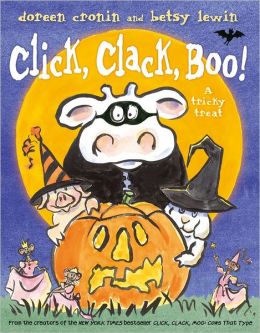 Stephen Savage uses his trademark arresting graphic images to count down in Ten Orange Pumpkins, as a mummy and others make the pumpkins disappear one by one. Farmer Brown may not fancy Halloween, but his animals sure do, in Click Clack Boo! by Doreen Cronin. Betsy Lewin's watercolors portray the cow in a skeleton's cloak and the chicks dressed as ghosts; Duck (we won't give away his costume) precipitates the denouement. The stars of Five Little Monkeys Trick-or-Treat by Eileen Christelow pull a prank on Lulu, their baby-sitter, by switching their costumes, but the trick nearly costs them their treat.
Stephen Savage uses his trademark arresting graphic images to count down in Ten Orange Pumpkins, as a mummy and others make the pumpkins disappear one by one. Farmer Brown may not fancy Halloween, but his animals sure do, in Click Clack Boo! by Doreen Cronin. Betsy Lewin's watercolors portray the cow in a skeleton's cloak and the chicks dressed as ghosts; Duck (we won't give away his costume) precipitates the denouement. The stars of Five Little Monkeys Trick-or-Treat by Eileen Christelow pull a prank on Lulu, their baby-sitter, by switching their costumes, but the trick nearly costs them their treat.
Two standout read-alouds for a light fright: Can't Scare Me! by Ashley Bryan (reviewed below) and Ol' Clip-Clop by Patricia C. McKissack, illus. by Eric Velasquez. Pulling in the arts, the star of Crafty Chloe returns for Dress-Up Mess-Up by Kelly DiPucchio, illus. by Heather Ross, tailor-made for the child who loves to create costumes. Saint-Saëns's Danse Macabre by Anna Harwell Celenza, illus. by JoAnn E. Kitchel, describes how the composer created the perfect homage to the skeletons at rest in the Paris catacombs (includes a CD).
For early chapter book readers, Kylie Jean, Pirate Queen by Marci Peschke, illus. by Tuesday Mourning, proves that girls can pose as pirates, too; and in Captain Awesome Versus the Spooky Scary Noise by Stan Kirby, illus. by George O'Connor, the young caped crusader and his buddy overcome their fears. Joseph Delaney packs a big scare into a brief volume with The Ghost Prison, illustrated by Scott M. Fischer, set in the same world as his the Last Apprentice series and starring Billy Calder, whose first job is as prison guard on the night shift. --Jennifer M. Brown, children's editor, Shelf Awareness
The Best American Short Stories 2013
by Elizabeth Strout and Heidi Pitlor, editors
The Best American Short Stories anthology series began in 1978 and has featured a who's who of guest editors, including Joyce Carol Oates, John Updike, Raymond Carver and Stephen King. This year, Pulitzer Prize winner Elizabeth Strout (Olive Kitteridge) dons the judge's robes to render her literary verdicts.
In the introduction, Strout tells us her choices "had a great deal to do with voice," that "sound... has authority." The subject matter of her 20 selections varies greatly: trips to A.A. meetings, aging parents who require care, job losses, mortgage crises, divorce, computers and cell phones in the classroom. There's Steven Milhauser's "A Voice in the Dark," about a boy first hearing the story of Samuel, or Jim Shepard's "The World to Come," about a farm wife's only friend, who's forced to move away. These are mundane topics--until a voice brings them to life. As a short story, moreover, "the ride is quicker, the response heightened." Nearly half of the anthology's selections come from just two magazines--six stories from the New Yorker, three from Granta--yet Alice Munro's story has a very different sound from the George Saunders selection, or Junot Diaz's, or Joan Wickersham's. (This book is so selective that stories from great authors like Ann Beattie, Harry Crews, Colum McCann and Paul Theroux didn't make the cut.) Winners all, to capture a reader's ear. --Tom Lavoie, former publisher
Discover: The literary "Oscars" features 20 outstanding examples of the best of the best in American short stories.
Mystery & Thriller
Death on Demand
by Paul Thomas
Paul Thomas's Death on Demand is a perfectly paced thriller, full of gangsters and gigolos and people with secrets to hide. Maori detective Tito Ihaka--"unkempt, overweight, intemperate, unruly, unorthodox and profane"--has been in disgrace for the last five years. His refusal to give up on a hit-and-run case, and his hassling of the victim's husband, Christopher Lilywhite, led to his exile from Auckland to the boonies of New Zealand.
Now Lilywhite is dying of cancer, and he wants to talk to Ihaka. Lilywhite confesses he hired a hitman to kill his wife. The only catch? The hitman approached him, and Lilywhite has no idea who he was. He gives Ihaka a list of potential suspects, including several bigwigs in New Zealand business and government.
Ihaka's about to go back to the country, leaving Lilywhite's case to a former colleague, when two bodies turn up--a man and a woman, each brutally beaten, each wearing only underwear. The overworked Auckland detectives are forced to accept Ihaka's help as the bodies keep piling up. Ihaka discovers a lot can change in five years: some of his former enemies are now suspiciously helpful, and some of his former pals now seem to have agendas of their own.
Thomas brings the New Zealand underworld vividly to life, and has created an irreverent, sympathetic protagonist in Ihaka. The detective's stubborn tenacity makes the reader root for him to put the pieces together and solve the case, before even more people die. --Jessica Howard, blogger at Quirky Bookworm
Discover: Paul Thomas and his books starring Maori detective Tito Ihaka are very popular in New Zealand; this story of a string of murders that baffle police and gangsters alike should attract American readers.
Romance
Starry Night: A Christmas Novel
by Debbie Macomber
Debbie Macomber, author of more than 150 romance and women's fiction books, is back with Starry Night, a Christmas-themed story that will please her many fans.
Chicago newspaper columnist Carrie Slayton longs to write "real" news, but is having trouble breaking out of the society page. Fed up with her job and with living so far from her family in Seattle, Carrie gives notice. Then her editor offers her an amazing challenge: if she can find, and interview, the reclusive Finn Dalton--author of a bestselling survival handbook that's been topping the charts for months--he'll let her have any job she wants.
Carrie sets off for the Alaskan wilderness to track down Finn. She ends up not only finding him--and getting trapped in a cabin with him--but falling in love. Finn doesn't trust women, though, and he doesn't trust reporters; a female reporter is at the bottom of his list. Can Carrie overcome Finn's doubts and prove that she really does love him?
While Starry Night's conclusion is perhaps inevitable, Macomber gracefully weaves Carrie's and Finn's stories together, making the reader root for them to put aside their differences and find happiness. Perfect for the holiday season, Starry Night is a sweet little story of family and romance. --Jessica Howard, blogger at Quirky Bookworm
Discover: A sweet Christmas tale of love and connection between an ambitious journalist and a reclusive writer.
Graphic Books
We Won't See Auschwitz
by Jérémie Dres, transl. by Edward Gauvin
In We Won't See Auschwitz, first-time author Jérémie Dres has created a gorgeous work of graphic nonfiction, recounting the search for his Jewish-Polish roots. One year after the death of his grandmother, Dres and his brother, Martin, embark on a week-long trip to Poland, with warnings from Parisian relatives about relationships with Poles, complicated by lingering anti-Semitism. Dres's first encounters in Warsaw bear out this observation, while interviews with assimilated Jews provide a deeper perspective on Judaism in post-World War II Poland, a slow-melting frost that Dres impersonally depicts in stark black-and-white poetic images.
Their emotions change when the brothers visit a Warsaw cemetery to view the graves of their great-grandparents. A trip to the ancestral shtetl in Żelechów reveals more neglect, fostering anger and resentment. Yet Dres finds glimmers of hope that spark optimism for Judaism's rebirth in Poland, including a Kraków festival that honors and embraces the nation's Jewish history, and the joyous sound of old Jewish music unfolding in dreamy, revelatory layers in a Kraków synagogue. "Our family had a narrow view of things," Martin remarks. 'What we just heard shines a spotlight on everything we didn't know. It's like tripping over a mound of dirt to find it swarming with ants."
Dres sees no point in visiting Auschwitz and its sad Holocaust past when he and his siblings are heirs to a rich pre- and postwar legacy. His story is one that should resonate with the many Americans who have rediscovered and seek to embrace Jewish roots beyond their grandparents' suffering. --Nancy Powell, freelance writer and technical consultant
Discover: A beautifully illustrated document of two Jewish brothers who visit Poland seeking their cultural heritage.
Food & Wine
Better Homes and Gardens Baking: More than 350 Recipes Plus Tips and Techniques
by Better Homes and Gardens
Even the most confident chef can feel a bit insecure when faced with the alchemy of baking. Fortunately, Better Homes and Gardens has created the "first, last, and only baking book you'll ever need." Before Better Homes and Gardens Baking reveals recipes, it comprehensively analyzes the role and function of ingredients as fundamental as flour. If baking powder and baking soda cannot be substituted for one another, why do they both turn up together so frequently in recipes that involve brown sugar? How is it that different combining techniques can produce such different textures from the same basic ingredients? Why is whole wheat flour rarely used alone--and why should it never be packed when measuring? Baking reveals all.
Although the focus of Baking is clearly on creating tasty treats, the inclusion of health-conscious tips, from ways to lower the fat content to flour alternatives and heart-healthy oils, are valuable additions. Each section begins with an iconic recipe, and then highlights "Make-It-Mini" and "Make-It-Mine" alternatives that allow for customization. Every recipe is accompanied by preparation, baking and cooling times, along with mouth-watering, step-by-step photos. Common questions are answered throughout the book--how to frost a cake, when to grease a pan, how to convert cake recipes to cupcakes, etc. Baking unveils the mystery behind the chemistry of cooking. --Kristen Galles from Book Club Classics
Discover: Anyone befuddled by baking will love Better Home and Gardens' comprehensive bible on the subject.
Biography & Memoir
The Investigator: Fifty Years of Uncovering the Truth
by Terry Lenzner
Terry Lenzner's career began in the Justice Department's Civil Rights Division in the 1960s, and has ranged from the Senate Watergate Committee through private legal practice to his own company, Investigative Group International. A lawyer by training, he found his passion in research and sleuthing. The Investigator reads like a Forrest-Gump-style catalogue of cases that have caught the public eye--from the murders of three civil rights workers in Mississippi, to the Harrisburg 7's federal case for antiwar activism, to Watergate, the Unabomber, Monica Lewinsky and the death of Princess Diana.
Lenzner's clients include governments, politicians, businessmen and celebrities; the resulting wide-ranging subject matter in this memoir accounts in part for its appeal. Even the tedious financial fact-checking of an investigation into the Trans-Alaska Pipeline is brought to life by Lenzner's passion. He gives character sketches of public figures he's known, debunks public perceptions of certain events and offers investigative tips along the way. He is concerned with the truth, not satisfying the client at any price, and shares anecdotes in which the two goals were irreconcilable.
Impressively, this seasoned investigator is also a fine writer. His story opens compellingly, giving background while simultaneously jumping right into the action. Although "this isn't meant to be a history book," Lenzner writes, The Investigator is an absorbing and intelligent sampling of American history, told in puzzles and--sometimes--solutions. --Julia Jenkins, librarian and blogger at pagesofjulia
Discover: An investigator's caseload over the decades offers a captivating glimpse of the intersection of politics, celebrity and money in the U.S.
Philosophy
Novelty: A History of the New
by Michael North
It is generally taken for granted that "newness" is a positive and necessary quality--yet where does this assumption come from? And why is it so easily accepted? In Novelty: A History of the New, Michael North dissects and deconstructs the notion of newness. Beginning with issues of why and how we have considered the new throughout history, North stretches this question to include the existence of newness itself. If everything comes from something prior, is the concept of novelty even possible? Can something truly be new, or merely a case of recurrence or recombination?
North's specialty as a scholar is 20th-century modernism (Reading 1922 et al.), but Novelty begins with the ancients, taking the reader from Plato up to the popular culture of the recent past. It's a rigorous analysis, but simplified in a digestible and entertaining manner. In his discussion of art, he points out that the distinction between modernist art and that which followed it was based on the possibility of novelty and associated qualities such as authenticity and originality. "All of these were blown away like so much dust, it seemed," however, "when Andy Warhol promoted some Campbell's soup cans from the supermarket to the art gallery."
As academic works should, Novelty pushes continually into the theoretical implications of its subject. It is not enough to consider novelty--we must consider why we consider it, and how. Consequently, Novelty is a challenging exercise in meta-cognition, one that will leave readers' minds feeling flexed and strengthened. --Annie Atherton
Discover: An intricate and challenging history of the concept of novelty and its shifting prominence in our culture.
Reference & Writing
The Best American Infographics 2013
by Gareth Cook, editor
We are in the "golden age of infographics," claims Gareth Cook, editor of The Best American Infographics 2013. These visual representations of data and stories can be found on television, online and in print, used to represent everything from the most-discussed sports stars on ESPN to gun ownership rights by country.
Presented in full color, the 69 infographics Cook has selected are a testament to the power of visual storytelling. Some are elaborate bar graphs and charts, such as "The Four Kinds of Dog," which shows dog breeds grouped by their DNA profiles; others show one set of data in relation to another, such as "Gay Rights in the United States, State by State." Flow charts document everything from "How to Be Happy" to answers to the question, "Should I Check My Email?" An entertaining introduction from former Talking Heads frontman David Byrne catalogues the various approaches and presents the pros and cons of each, allowing readers to ask important questions about how and why each graphic interprets the data on hand.
Infographics allow designers to compress a lot of data and information into a small space, which makes these graphics best explored in small doses. Spread out over multiple readings, The Best American Infographics 2013 proves a testament to the power of visual storytelling--and is an invitation to readers to question the myriad graphics they inevitably encounter each day. --Kerry McHugh, blogger at Entomology of a Bookworm
Discover: With the newest addition to the annual Best American anthologies, information has never looked so good.
Art & Photography
How Architecture Works: A Humanist's Toolkit
by Witold Rybczynski
In How Architecture Works, Witold Rybczynski's practiced eye roams freely from the weathered metallic skin of Frank Gehry's Disney Concert Hall to the simple seamless pipe railings of the emergency stairways in Rem Koolhaas's Seattle Public Library. He is equally perceptive on pilgrimages to masterpieces like Frank Lloyd Wright's Fallingwater or Moshe Safdie's Crystal Bridges Museum, which sits "fragmented, self-effacing, nestled into the landscape."
Rybczynski's voice, honed over nearly 20 books on architecture and related subjects, is eloquent and free of polemics or prejudice. His goal is simply to discover "what makes a building memorable.... Why does this building touch us?" He organizes his "humanist's toolkit" according to basics of good design, starting with an idea and working through the site, plan, structure, skin and finally the details. Because Rybczynski includes only buildings he has visited personally, How Architecture Works is more a stroll with a knowledgeable friend than a vigorous workout with a trainer. When he stops in Golden Gate Park between the Renzo Piano California Academy of Sciences and the Jacques Herzog and Pierre de Meuron de Young Museum, he notes the contrasts. Piano's "axial symmetry and the mirroring of forms provide a clear and simple sense of orientation," while the de Young "doesn't have an obvious structure, but it has character, and the fractured spaces evoke earthquakes and shifting tectonic plates."
With Rybczynski as our guide, we see what makes cool buildings cool. --Bruce Jacobs, founding partner, Watermark Books & Cafe, Wichita, Kan.
Discover: A user-friendly tour of the ins and outs of great buildings by a great architectural writer.
Poetry
Dog Songs: Poems
by Mary Oliver
Dog Songs is a collection of new and favorite poems by renowned poet Mary Oliver. The 35 poems, plus one longer prose poem/essay that caps off this slender volume, revolve around dogs and all they mean personally to Oliver, touching as well upon more universal themes of the human-canine bond and how the companionship of dogs anchors people to the natural world.
John Burgoyne's pen-and-ink drawings mirror the unadorned language that makes Oliver's poetry both intriguing and accessible. Each poem contains poignant observations about the dogs that have enriched Oliver's life and work. Often in just a few, carefully chosen phrases, simple dog pleasures such as daily walks, frolicking in the grass, smelling flowers, chasing mice, darting ahead and going off leash depict a dog's ability to live joyfully in the moment. These vivid metaphors will inspire readers to seek a similarly vibrant richness of life.
Oliver's poems about her beloved dog Percy--named after the poet Percy Bysshe Shelley--are succinct and clever. Percy's evolution is creatively explored with insight, compassion and humor as he mischievously eats books, has a rendezvous before he's neutered and even keeps the author company while she does her income taxes. "I am trying to live... the examined life," she writes. "But there are days I wish there was less in my head to examine." Dogs, in their carefree, unconditional friendship and adoration, offer Oliver--and readers--a hopeful respite. --Kathleen Gerard, blogger at Reading Between the Lines
Discover: Thought-provoking poems about dogs and the role they play in enriching the human experience.
Children's & Young Adult
Can't Scare Me!
by Ashley Bryan
Children will be chanting along with the "willful, thrillful child" at the center of this folktale about a brave boy who uncovers a healthy dose of fear.
The boy hero of this picture book, musically retold by Ashley Bryan (Beautiful Blackbird) from a collection of folklore from the Antilles, has worn out his parents, who send him to Grandma. The boy's grandmother holds him close and tells him the story of a two-headed giant and his three-headed brother, who come out after dark. The boy pays her no mind. He plays the flute ("Too-de-loo-de-loo-de-loot!") and sings a powerful song, "Tanto, tanto, I'm wild and I'm free./ Grandma's stories can't scare me./ I'm bold! I'm brave!/ And though I may be small,/ No many-headed giant/ Scares me at all." Anyone who has ever heard Bryan perform his poetry knows that he reveres both the spoken and written word. He choreographs his refrains into foolproof phrases that anyone may recite with confidence.
In a ploy that will be familiar to youngsters, Giant Three Heads urges the boy closer, the better to hear his song. Bryan's fiesta-bright colors keep the story from feeling too scary, even when the giant snatches him up and pops him into a sack. The captive boy successfully uses the Giant's tactic on the cook, Janey ("Open the bag a wee bit more,... you'll dance upon the tip of your toes, with tippity-tappity-tiddle") as he plays his way out of the sack ("Too-de-loo-de-loo-de-loot!"). The hero returns to Grandma a little wiser and more respectful, yet still that appealingly willful, thrillful child. --Jennifer M. Brown, children's editor, Shelf Awareness
Discover: Consummate storyteller and artist Ashley Bryan's charming tale of a boy with bravado who learns that sometimes Grandma knows best.
Unbreakable: The Legion, Book 1
by Kami Garcia
In Kami Garcia's (co-author of the Beautiful Creatures series) first solo effort, she combines a stylized mélange of gothic, ghosts and grimoires. After her mother's sudden heart attack, Kennedy Waters is orphaned. "I understood how it felt to be broken when everyone around you was whole," she thinks. But when twins Jared and Lukas save her from a vengeance-seeking spirit's attack, Kennedy's world is redefined to include the paranormal as she is thrust into the hunt for the demon Andras.
There are five members of the Legion of the Black Dove, charged with destroying supernatural threats, and Kennedy is believed to be the fifth. She feels untrained for battle, but her artistic background and photographic memory prove useful. Kennedy fights her personal demons while helping the team search for the Shift, a weapon believed to be strong enough to battle Andras. The twins serve as the heart of the team as well as competitors for Kennedy's heart. She's torn by their identical appearance and dissimilar personalities ("You can't choose the person who really sees you... The one you can't imagine being lucky enough to have, or unlucky enough to lose"). Lukas feels more like a friend and Jared a lover, but their secret could change, or destroy, Kennedy's heart.
This must-read title boasts alluring cover art, hunky twin love interests and a catchy phrase: "May the black dove always carry you." --Jessica Bushore, former public librarian and freelance writer
Discover: Kennedy appears to find her place in the world, but is the Legion her salvation or her undoing?


